MÄRKLIN’S 00/HO TRACK SYSTEM 1935 – Present

Introduction
Märklin produced several forms of track for their 00/H0 scale trains since their inception in 1935. This track is a “three-rail” system (the inner track, solid or stud, providing the power and the outer track providing the return, just like the old Märklin or Lionel 0-gauge track. In this article we explore an overview of the various track offered by Märklin over the course of its history.
The 00/H0 track forms differ significantly from each other but can be used together on the same layout with and sometimes without adapter track.
A somewhat similar metal three-rail track system was produced by Hornby for their 00 trains, which ran on DC power.
The German Trix firm also used a 3-rail track system for their DC operated trains, whereby the outer (return) rails were insulated from each other being fastened to a black cardboard base thereby allowing 2 trains to run simultaneously on the same track.
Märklin’s different 00/H0 track forms are discussed below.
The first metal # 3600 series track
When Märklin introduced their first “00” trains in 1935, these trains ran on track with a metal roadbed, a distance of 7 mm between the painted ties and a tubular middle rail. Between 1935 and 1947 these 3600 track pieces were produced with minor variations. The roadbed and material used for the middle rail, colouring, etc. changed often due to paucity or lack of raw materials before and just after WWII. The beige colored track below was produced from approximately 1946 – 1947 when the lithography materials required to print the roadbed on the track were scarce. This track is known as “PX-style track” because the sets containing this track were sold in Postal Exchange (PX) stores to US soldiers. The track system included straight track (18 cm. long), curved track with a circle diameter of 72 cm, (twelve track pieces forming a circle), manual and electromagnetic switches and a crossing track.
NB: the length of each straight track piece of 18 cm is one-fourth of the circle diameter of 72 cm. This configuration has been maintained by Märklin from the first 00 track until today.
The Post war metal #3600 series track
In 1947 Märklin improved their 3600 series tracks by spacing the ties much closer at 4 mm. This track system lasted until 1958.
There are several notable variations within this track system. Initially the outer rails were blackened solid brass, later hollow. Also the paint scheme of the underside of the tracks differed, especially as there was a shortage of available paint in the earlier post-war years.
The system included straight track (18 cm), curved track with 12 track pieces form a circle of 72 cm radius, manual and electromagnetic switches, a double slip switch, a crossing track and set of wide radius curved track numbered 3700 (12 track pieces form a circle of 91 cm). The electromagnetic switches initially had a single solenoid, later a double solenoid for operation.
The Model-gleiss, #3800, 3900 series track
From the French firm Vollon & Brun, who produced beautiful 00 trains, Märklin purchased the license for their track.
The French track consisted of plastic ties embedded into a metal roadbed and had a solid centre rail.
In 1953 Märklin came out with an improved version of this system: for the first time the “stud-contact” system was introduced. The track consisted of solid blackened brass rails, black plastic ties embedded in a metal roadbed and very small stud contacts protruding through the plastic ties, similar to the later K-track system. The straight track was 22 cm long. Sixteen curved track pieces formed a circle (117 cm. diameter for the #3900 series curved track and slightly smaller for the #3800 series curved track). Electromagnetic switches and a cross-over track were sleek, and bumper track pieces had light. The colour of the metal roadbed is slightly yellowish and different from the later M-track.
The track was very labour intensive to produce and was therefore rather expensive. It was offered together with the existing 3600 series track and did not sell well. Besides, the locomotives had to be adapted with a special pick-up shoe. The first “ski pick-up shoes” were introduced because the old tongue (or spoon) pick-up shoes could not run on the stud-contacts. The new ski pick-up was perfectly flat, and ran smoothly over the stud contacts.
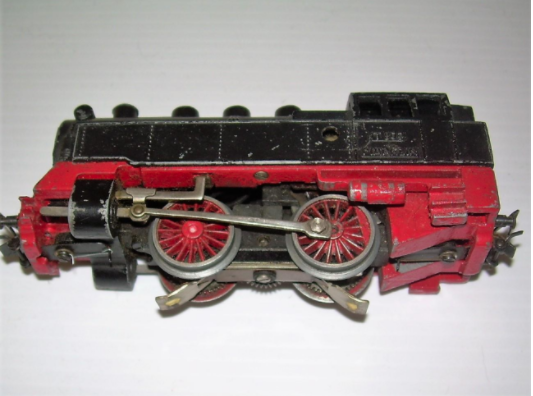
The “Model-gleiss” track system was discontinued in 1957, just after the introduction of the 5200 series M-track.
It must be stated that this system was beautiful and very realistic with its sleek switches and wide radius curves. The track pieces are far superior to the “M-track” and arguably, even to the “K-track”.
The #5200 series M-track
In 1956 Märklin introduced the “M-track” system (M: Metall), which lasted until 2001.
The track consisted of a metal roadbed with imprinted painted ties and studs protruding through the centre of the ties. Straight track pieces were 18 cm. long. Curved track of three different radii was available, together with manual switches, electromagnetic switches of various curvatures, including a curved switch pair and a three-way switch and two different double slip switches. Although not the most realistic, the system was reliable and sturdy. It was much cheaper to produce than the 3900 series track.
For the clockwork train, produced in 1953, a set of “M-track” without the stud-contact was available, which could later be adapted with the purchase of a center-stud rail for electric operation.
Track included in Märklin’s “Primex”-line (a somewhat simplified product) can be identified by its uniform grey colour of the roadbed but is otherwise identical to the M-track system.
The K-track
In 1969 Märklin introduced the “K-track” system. K: “Kunststoff”, German for Plastic. Consequently the metal tracks were from that time onwards dubbed “M-track”: M for metal.
The K-track is essentially the same as the “Modell-gleiss” from the fifties: plastic ties and small stud contacts, but without the metal roadbed. Originally the series had hollow rails (2100 series), later solid nickel-silver rails (2200 series). The assortment expanded over the years with curved track of five different radii, sleek switches, cross-overs, double slip switches and even flex-track. The K-track system looks very realistic, but the delicate connections between the track pieces are easily bent or distorted, resulting in poor electrical contact, especially after several times of connecting and disconnecting.
The C-track
When Märklin introduced a “toy-train” for children in 1988 (the Alpha train), it included a new track system, the #2000 series track, with a plastic roadbed, which was finely detailed, easy to connect and reliable for the distribution of continuous power.
This system resulted in the production of the so-called “C-track” (C: “click”, because the track pieces connect with a distinct click), which was further developed in 1996 with a wide assortment of various tracks, curves and realistic sleek switches. The system lends itself extremely well for operation with digital trains. The connections are secure, power supply in the system is continuous and electronics can be stored beneath the track.
The track can also be used in two-rail DC operation because both outer rails can be insulated from each other.
Compatibility
For those operators who wish to use the different track systems on their layout, Märklin made several adapter-track pieces available (from C- to K- or M-track, from K- to M-track). All metal track pieces (3600, Modell-gleiss, M-track) are fully interchangeable without the need for adapter track.
Operators using the Märklin digital system can best rely on C-track. K-track can also be used as long as the electrical connections between track pieces are secure. M-track is not recommended for digital operation.

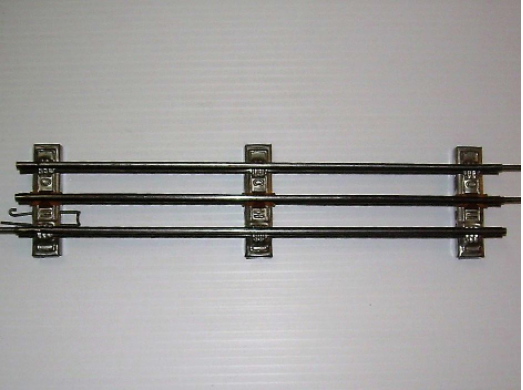
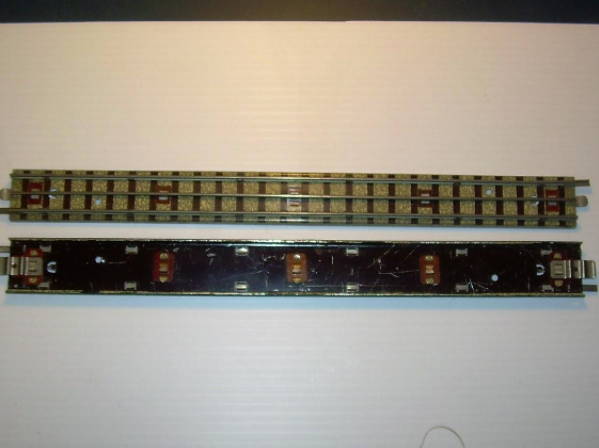
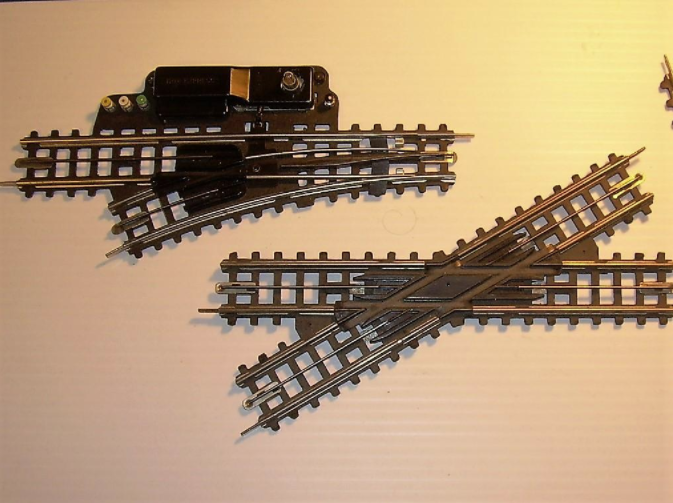
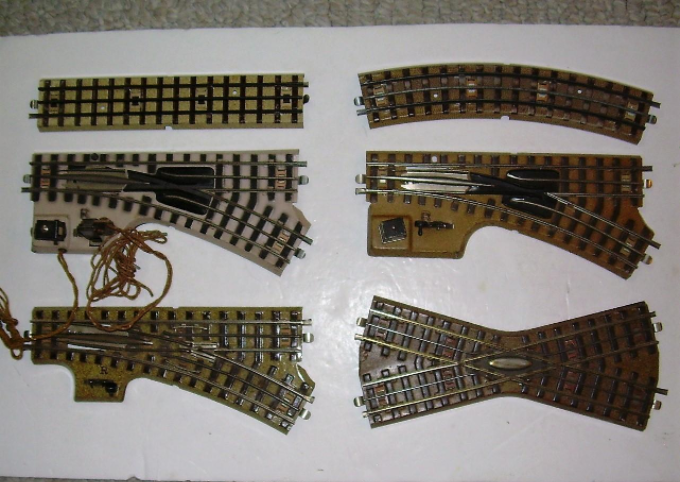
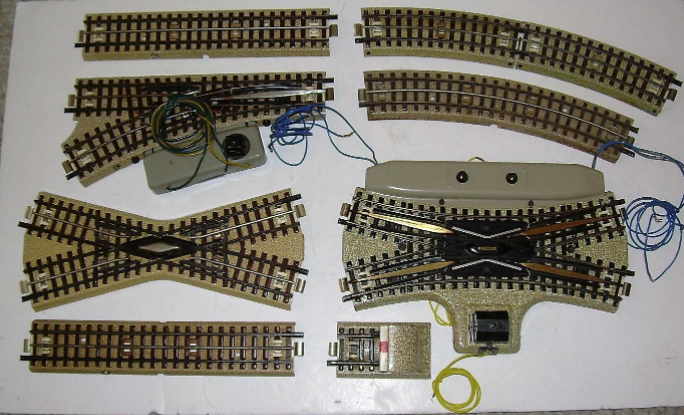
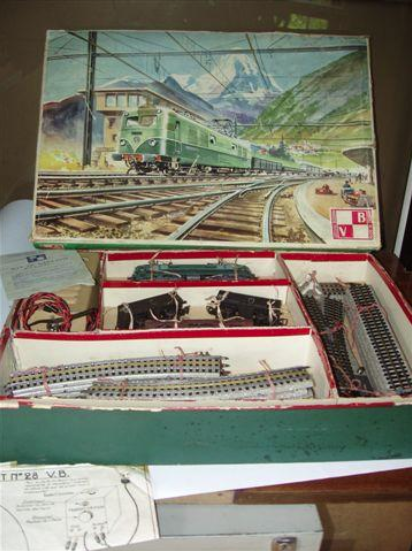

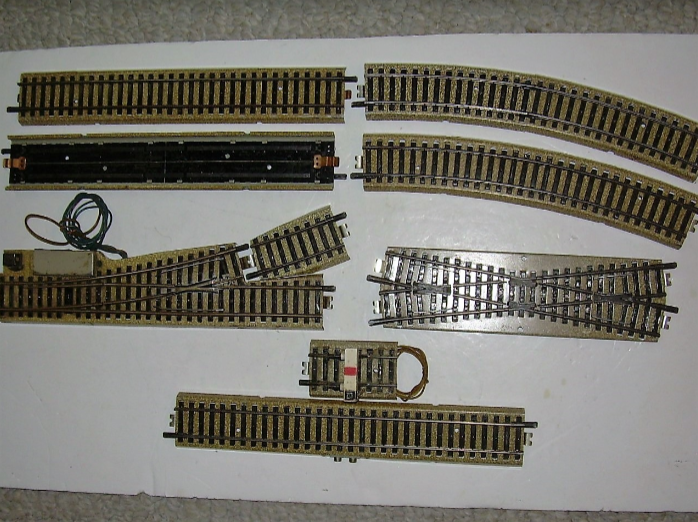
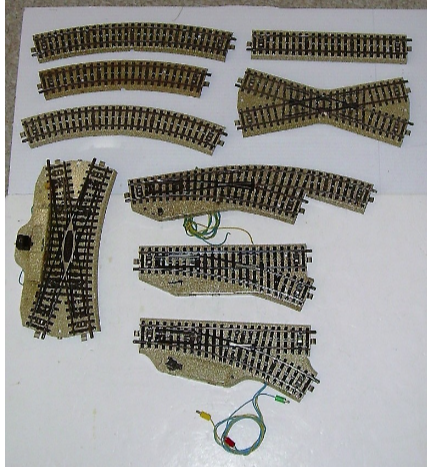
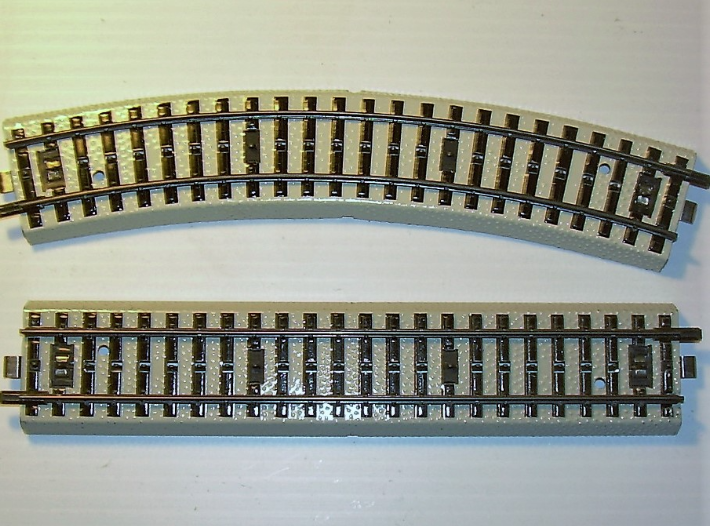
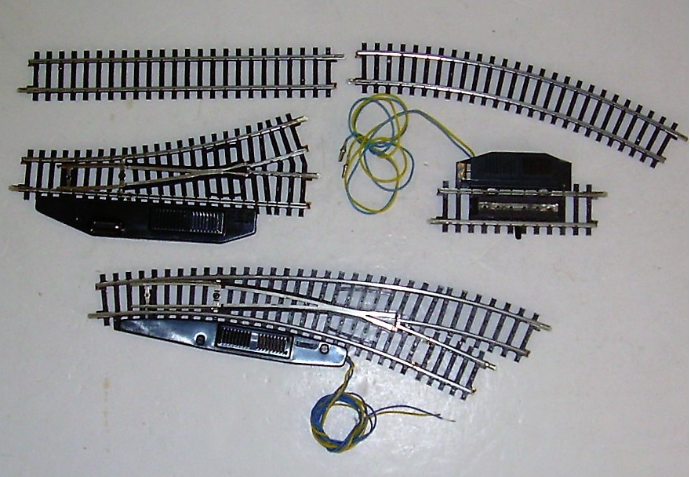
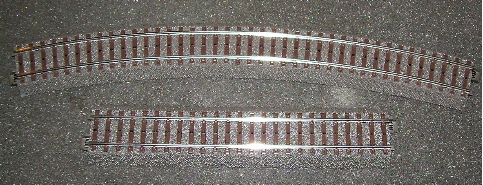
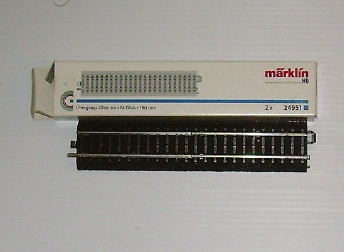
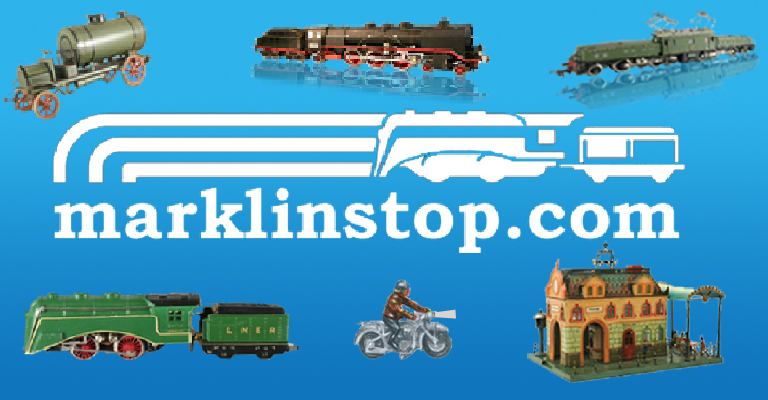
Very nice summary of the history of Marklin track. Thanks for assembling this post.
Interesting to note is that Märklin have used the name “Modellgleis” for 3 different types of track.
Other than the 3800/3900 track, today regarded as Modellgleis, the name was used when the revised 3600 tracks were introduced in the 1949 catalogue.
Also , for a very brief period around 2014, the name was applied to the all plastic C-track clone supplied with the battery operated my world starter sets.
Regards
Henrik Schütz
The term “Modellgleis” was also used for some of Marklin’s 0 gauge and even 1 gauge track. That track had multiple ties and had solid square rails, like the rails used in “real life” track. The track system had wider curves than the “normal” 0 gauge track and had sleek switches. VERY expensive!
Bert
Modell Gleise were also used for the Gauge 0 and Gauge 1 tracks from the 1930s. These tracks had solid nickle rails and had many metal ties and wide curves.
Bert
I really enjoyed reading your article. Can you also sometime write an informative article about which PRIMEX tracks are comparable in size and radius to Marklin tracks. I can’t seem to find any information on this subject. Thank you.
Thank you for your kind comments on the article.
The short answer to your question on compatibility with M-track is YES, the Primex track is fully compatible with Marklin’s M-track.
The Primex track is essentially the same as the common M-track, with straight track pieces of 18 cm and with 12 curved track pieces forming a circle, the same as the curved 5100 M-track.
The only difference with the M-track is the uniform grey color of the roadbed.
Also, Primex track pieces are not very diversified in number and size, There are no parallel curves and the turnouts have no light. All this was done to save production costs, thus allowing Department stores to sell somewhat less expensive Marklin products.
Other Primex products are also simplified Marklin products: steam locs have simplified valve gear, cars have fewer details, semaphore signals have no lights and so on.
Bert
Yes, it is true that Primex line is somewhat simplified. But not for every locomotive. Some of them are absolutely identical to Marklin counterparts, save for some decal marks
Very interesting overview!
But Bert van Helden’s statement that the Primex track system does not have parallel curves is not correct: A box of 6 tracks with radius 437,7 mm was available under the number 5077 (a box of 6 “normal” curved tracks was 5072). These can be found in the Primex catalogues – I found them in the 1991 edition, which was, I believe, the last year the Primex catalogue was published.
The Primex catalogues can be forund on the internet, as can the Märklin catalogues 1930-1999:
https://dermodellbahnblog.de/maerklin-katalog-pdf-download.html
(some of the files are quite large; I believe that is the reason a couple of the catalogues are not complete – the last pages are missing)
Hello, 5 28 2018
All Primex HO tracks etc fit excellent with all Marklin HO , other than the roadbed color being different.
Primex was made by Markln: their products were simplified and were often sold in Department stores. But their products are fully compatible with the Marklin products.
Bert
Primex was made by Markln: their products were simplified and were often sold in Department stores. But their products are fully compatible with the Marklin products.
Bert
Primex is fully compatible with standard rails, except color there is no difference!
I enjoyed your article very much. My father started my collection (actually his until he died in 1962) while stationed in Salzburg, Austria. The original items were from a PX set and expanded at local toy stores in Bavaria. I served 25 years in the Army and had four tours in Germany and greatly expanded my collection. Because I never had an opportunity t become a model railroader my tracks have been set up and taken down many times over the years. For my purposes I found the robust 3600 series best suited for frequent set up then break down for storage. Though the 5100 and 5200 provide many more layout options I will keep the 3600/3700 M track.
Great article, looks some of my M track is older than I thought.
I really enjoy the M TRACK. It goes together real well. This was a real great article on the vintage marklin track.
Thank you so much.
Love the article, great overview. Small comment on M track and digital: in principal it works just fine, do not be too worried. There may be an issue with the modern “click” shoe: on bumpy (older) M-track it sometimes makes bad contact with the loco. If that becomes an issue, a small welded wire from shoe to loco will do the trick.
The original Marklin rail in m track was brass . Later it was rolled metal (very bad for rust ) and finally steel in k track and code 90 in C track . Peco code 100 can easily be fitted to m track , and it doesn’t rust , which means all that m track can be reused . Only problem is the gauge is then 17 mm , because rail head width peco is 1.05 and original brass rail is1.22mm rolled metal rail is about 1.25mm. Well it all may seem a bit confusing , but my point is , that if Marklin gave us a nickel silver , non rusting continual rail at width 1.25 , we could all save that old metal rail base and end up with a better match for c track and not have to worry about the ballast on k track. By the way Marklin just glides on peco rail in m base , even at 17 mm, but if we had that rail we could get to go 16. 5 mm. Just wondering if any one knows
Great article. Answers a lot of questions and I learned a lot. I absolutely love my M track with its litho, toy-like appearance (I’m not looking for exact realism).
There are obviously a lot of Marklin experts out there, so may I ask a question please?
The centre studs on C-Track appear to be lower than the railhead. So I am curious to know what happens at points. The collector shoe will be below the railhead, and must rise to go over the point blades. As it does so, why do you not get a short between the centre studs and the running rails?
With kind regards.
Norman.
You can notice that when approaching the center of the point, the central studs get progressively higher so that the pick up shoe will be raised and not touch the outer rails, thus avoiding the short circuit.
Regards
The 2200-series K-track rails are not made of nickel silver, but stainless steel. The stud contacts are not stainless, though. The same applies to C-track. Nickel silver is used in the rail joiners on newer versions of K-track; initially brass was used.
Although developped much before the appearance of Delta and Digital power systems, I see no reason why the M track could not be used on a digital layout, if the connections between rails are clean and secure. Likewise with C track operation, the M series points and turnouts motors, and the signals, can be operated separately through AC power and switches produced by a separate transformer, while feeding the locomotives with digital current. I tried it and it works very well.
Indeed, the first attempt by Marklin at selling a digital system was named Delta and the corresponding complete train sets were sold with M track…
I totally agree, M-track is fine for digital operation 🙂
This article concludes that M-track is not recommended for digital operation. Why?
M-track is perfectly fine for digital operation. You only have to make sure that you have a surplus of power leads, as the electrical connection of the tracks is not that good.
I am new to the Marklin track system. Track is connected ingeniously and easy to separate with a side motion. My layout is designed to be taken apart for relocation, supposedly by pulling each 3×7 bench apart from each other. What are my options for track disconnection
when separating the benches. Would much appreciate finding out if there is a secret? Great article on the history and compatibility of Marklin track.
I disagree with the comment about M-Track not being compatible with Digital.
Although my set is currently in storage, it consists of over 1,500 feet of M-Track and ModelGleiss. I use the original Marklin Digital system.
It works just fine. I also have multiple booster units.
Continuity is a bit of a problem but that has always been the case with M-Track. When running, I wired it so that there are periodic supply and return connections.
This was most useful. I have K track, M Track 5100/5200, and 3600 pre and post WWII HO. I am interested in know more about the variety of rail styles points etc of early track. I have photos but not sure how to post them here to get answers to questions
I understand that early track was subject to the shortage of materials, paint etc but here’s a few questions.
1. Some early track had clearly marked ballast – (little circles) in a fairly uniform light beige while others has a vague brushstroke ballast- can one date them by the different type?
2. The early track with clearly defined ballast that I have is all black underneath while the other is brown – is this an indication of date of manufacture?
3. Some early track with the vague ballast has very narrow center rail – can this date the track?.
4. Some early track has black centre rail – can this date track?
4. I have one pair of electric points complete with lanterns and two pairs of cables for each point – how were these connected and to what?
5. My early early electric points has a tag by previous owner saying Wide lantern- Where there different types of lantern up until 1953
6. I have an interesting rail with approx 5mm long slit on side of ballast and a nurled contact above it and insulation underneath – any ideas what its for?
As I said might be clearly if I could post photos!!
the track with the slot that you describe was used in conjunction 9for instance) with the electromagnetically operated crossing guards to lower them for the approaching train
I have had solid center M-track which I phased out when the studded center rail became available. My early analog layout was tantrum up and a different layout , now digital, was built with the same M-track. I did clean the track in our dishwasher, however, it had to be very thoroughly clean in ask oven and medium temperature, and then light costing with WD40! It worked perfectly! The layout is large and all digital. Since as M-track is slightly noise I did put the table on a thin corn base. In my opinion M-track looks better than C-track! And M-track is perfectly suitable for digital operation!
AFAIK the clockwork track could only be “augmented” to center rail – not center stud.
Very nice information what is what for the Märklin.
I have my childhood set from the 80’s with few trains and dozen cars. Two blue controllers and half dozen switch boxes. It is based to M-track.
But then I have as well one of my distant family member trains and cars, as well some tracks. From Germany from a 50’s or 60’s when he was a diplomat there.
That set is smaller, but uses Model-gleiss system or the 3600 series tracks. I am not sure.
I have always wanted the plastic K-track rail system, that you could embed to the terrain and decorate your own gravel under it with sand. But have only seen such sets, never thought compatibility.
So now that I learned there might be the conversion / adapter to mix different tracks, my question is that how about the trains? My trains has the small electric ski under them, center of the train. But can those be converted any sensible manner to receive the electricity from the rails?
I am considering to purchase multiple lots of M-tracks to build my childhood dream, but I still think I would like the K-track for the looks.
the “ski” pick-up shoe works fine on all Marklin track systems, but the old (1935 – 1947 or so) spoon-type pick-ups don’t like studded track.
In most cases the worn ski-pickup shoe can be easily replaced. You need the # of the engine to select the right length/base for the replacement shoe.
Bert
I am a fan of the stud M track. I believe the last version of M track used an attachment method for holding the middle “stud” section to the metal base that was almost invisible from the top side. Anyone know the actual years of production? Or other details? Thanks, Tim Eckert